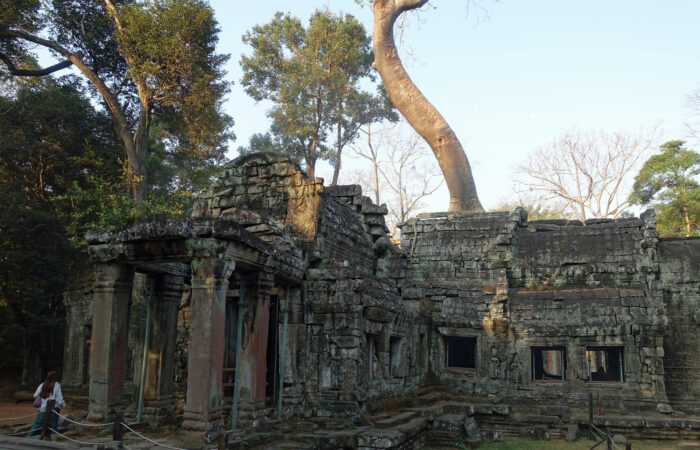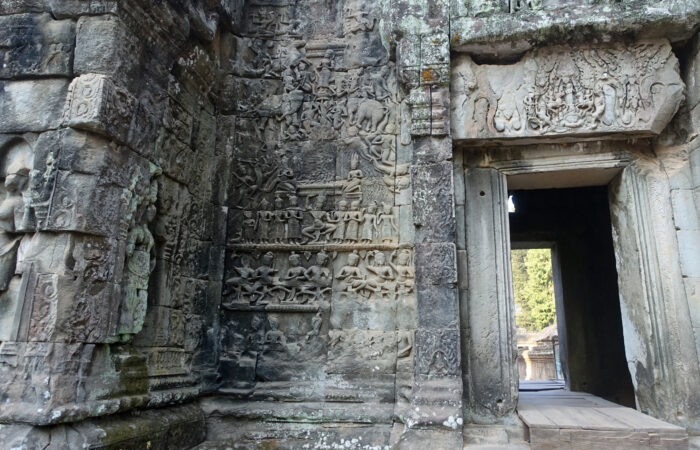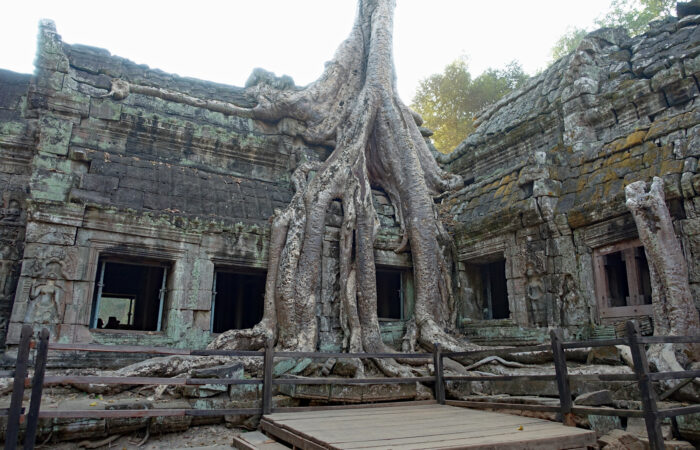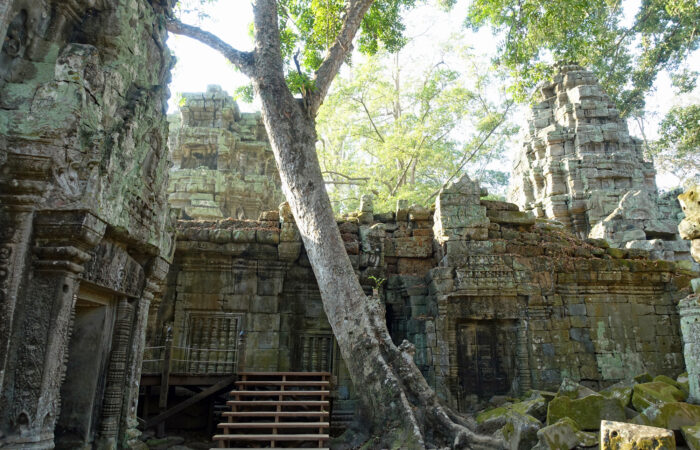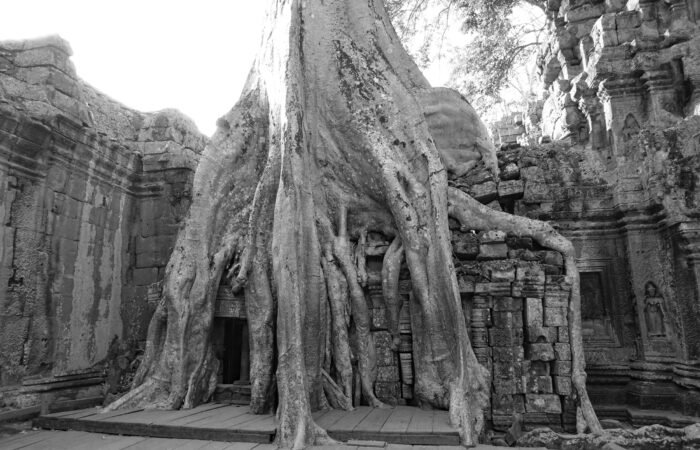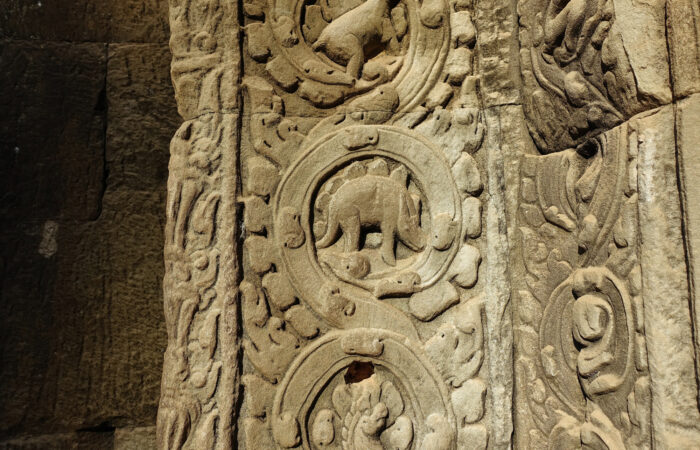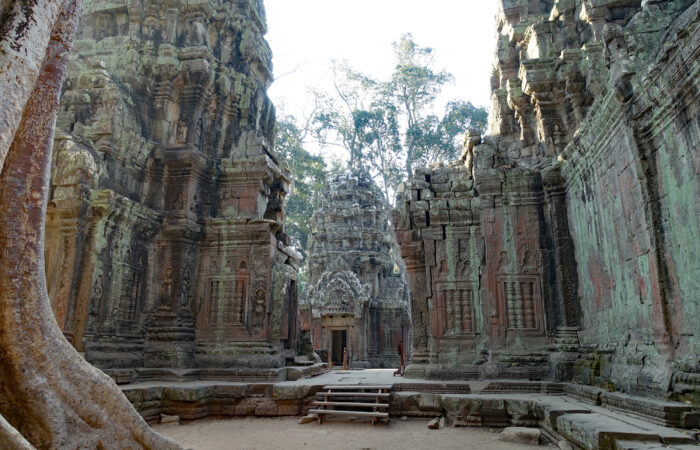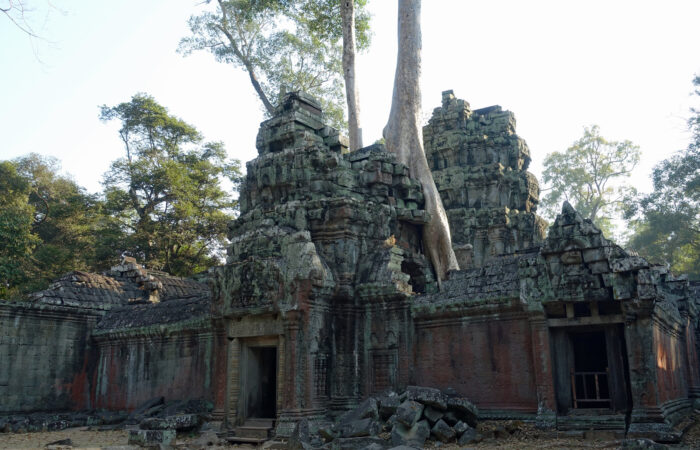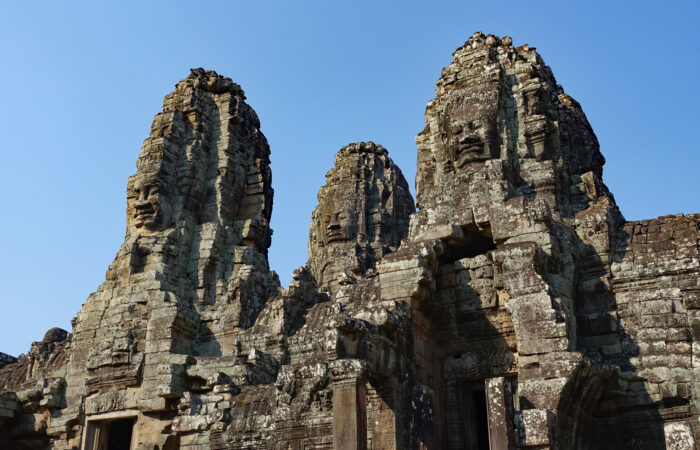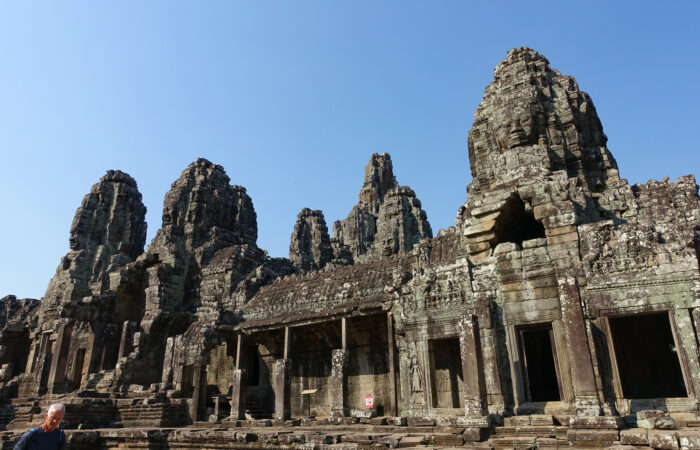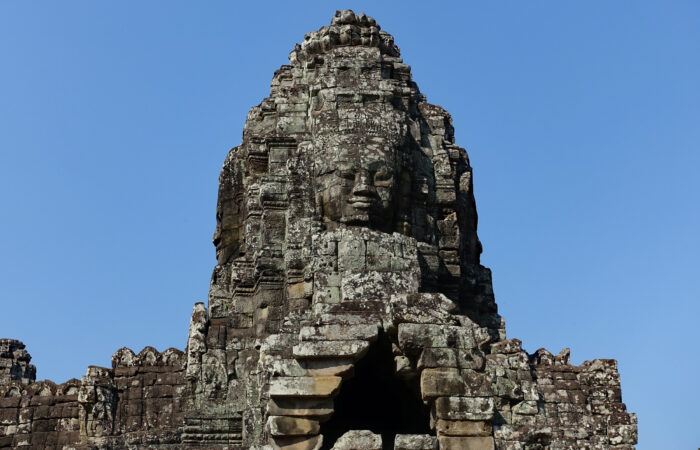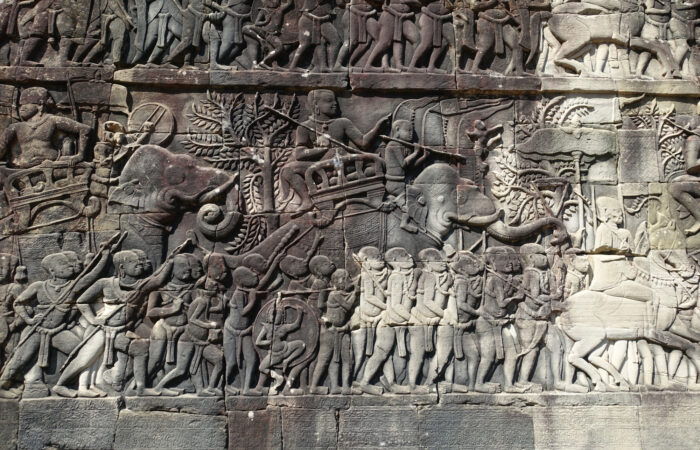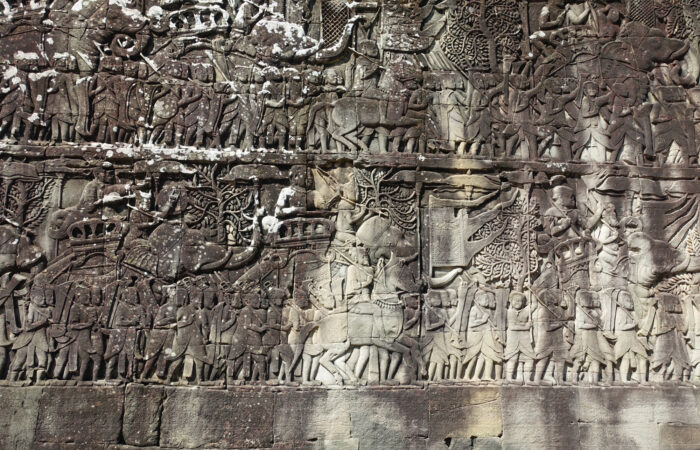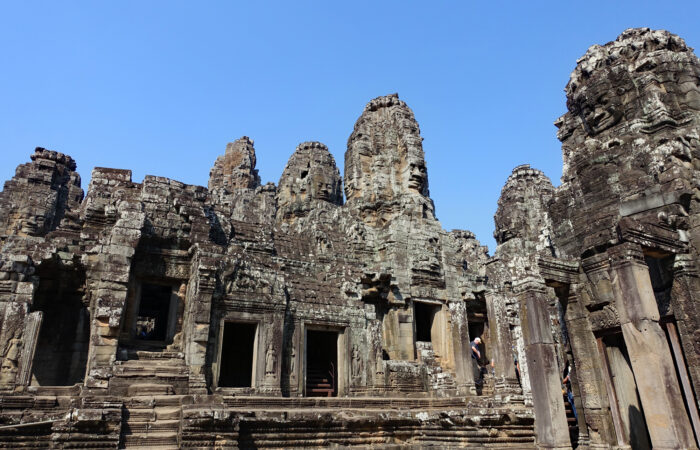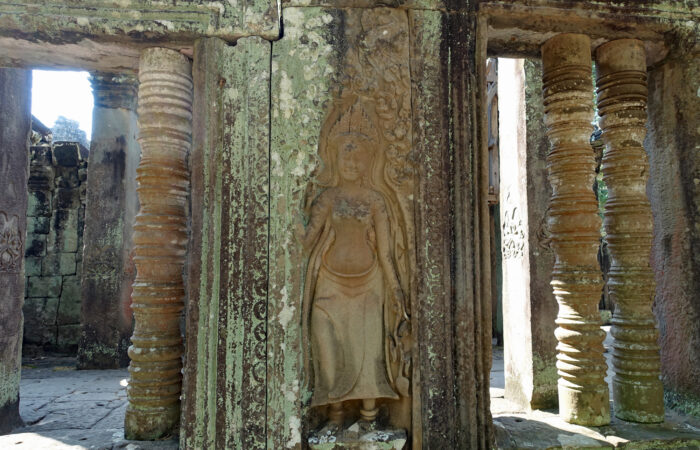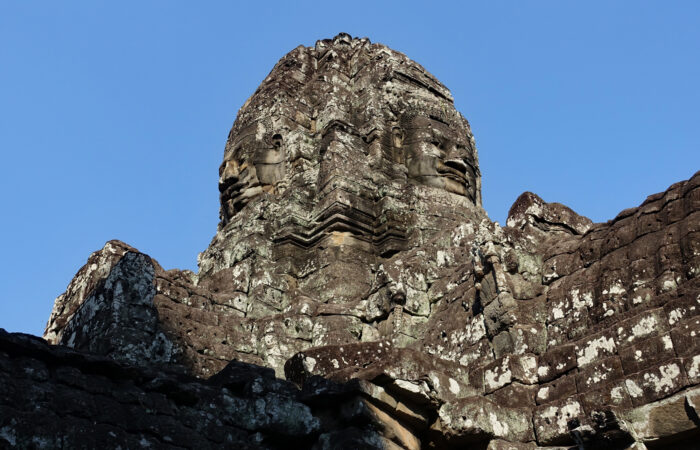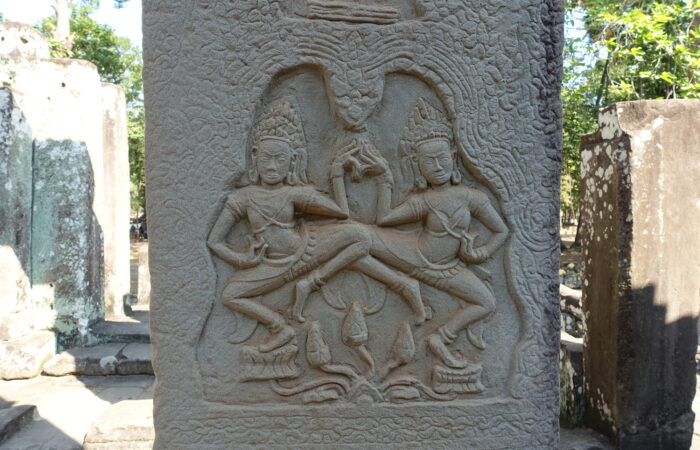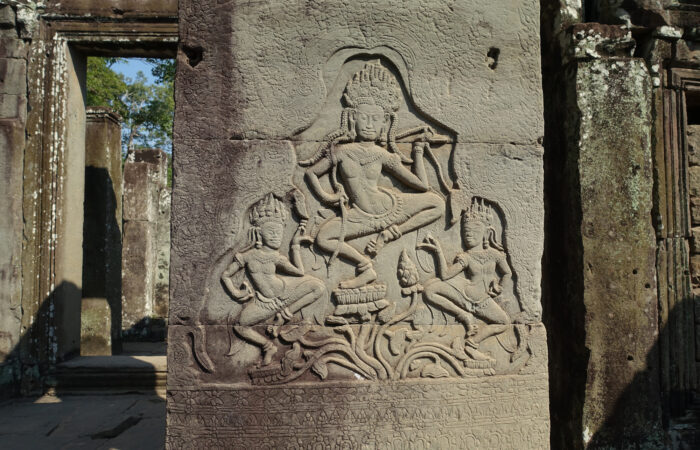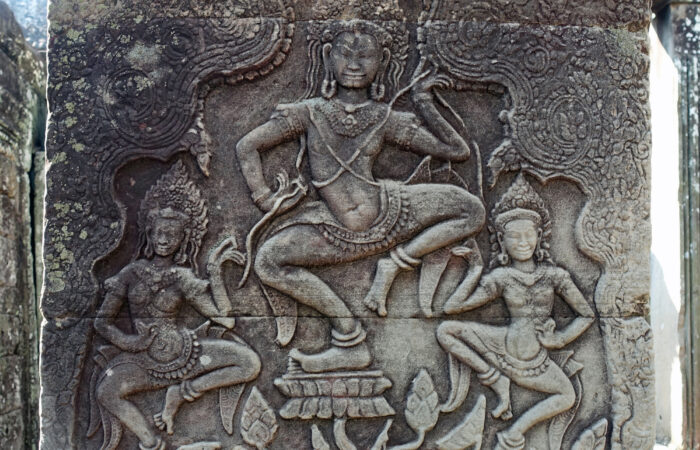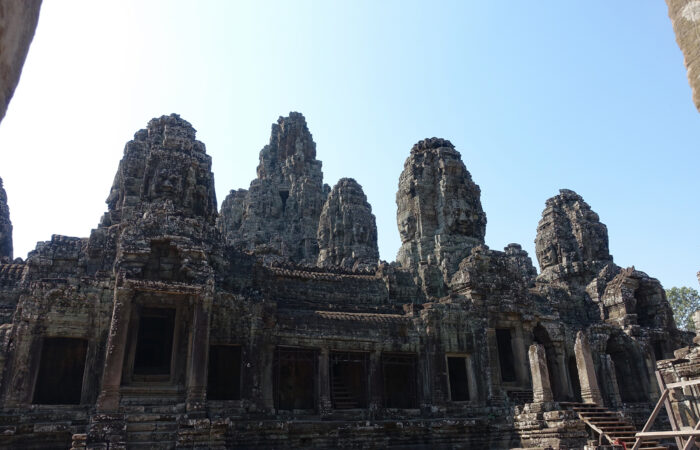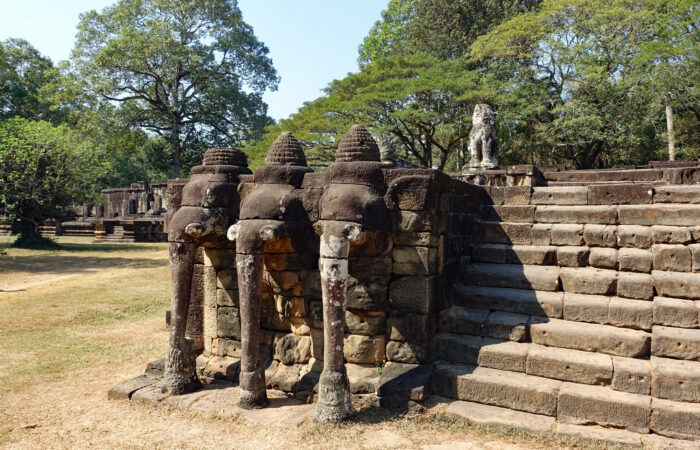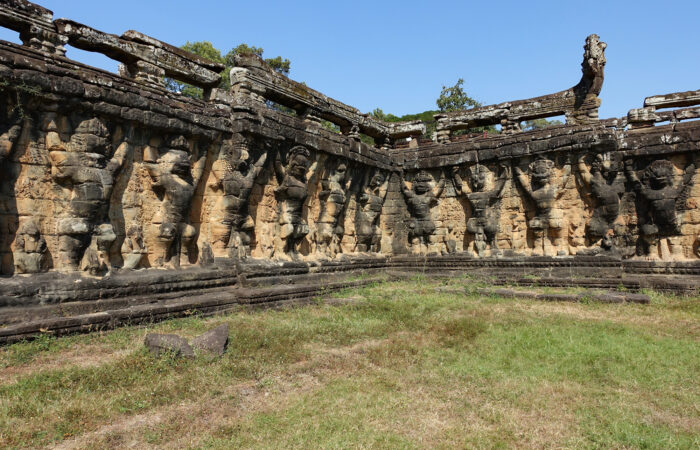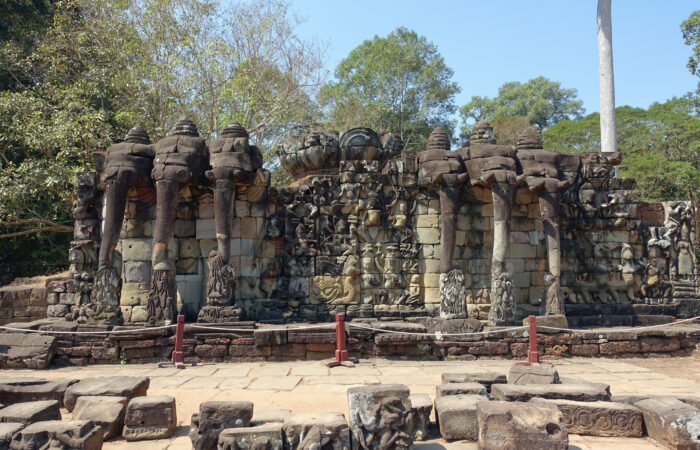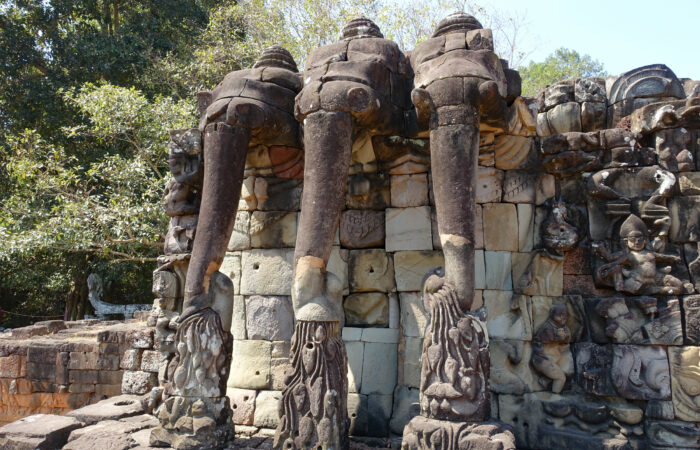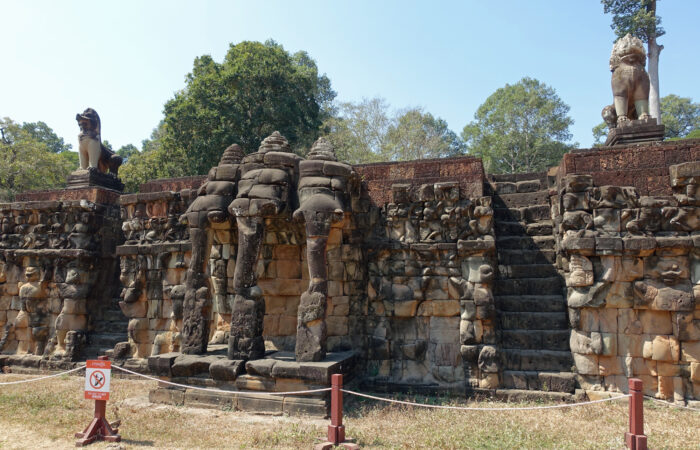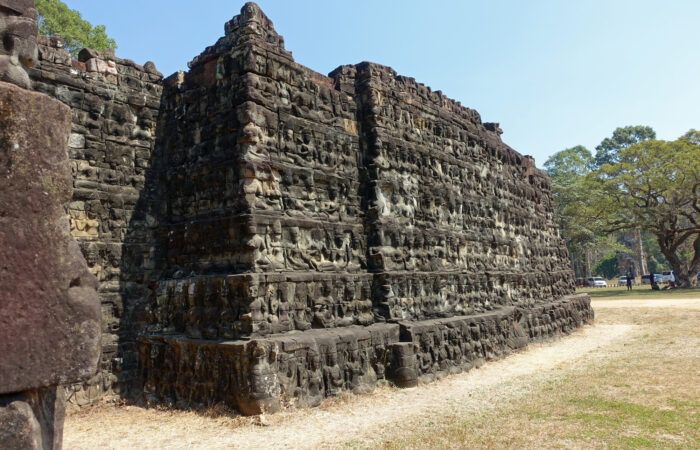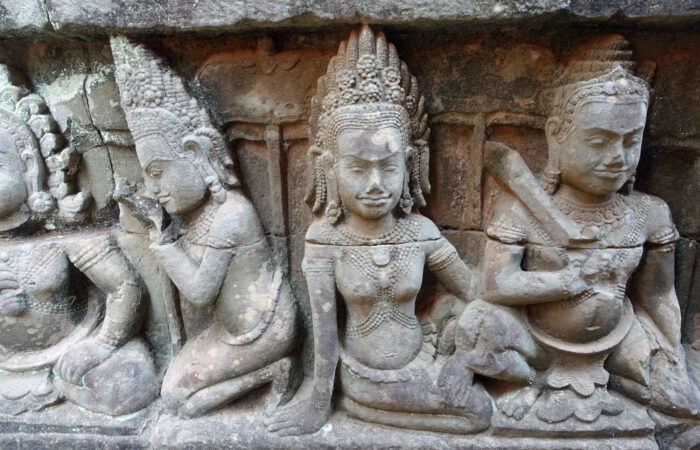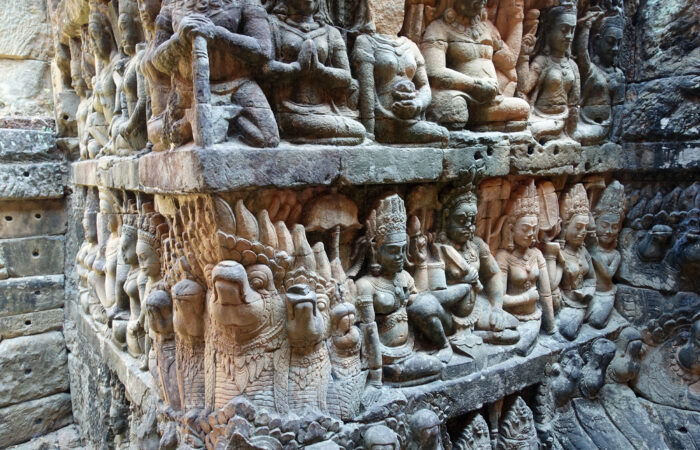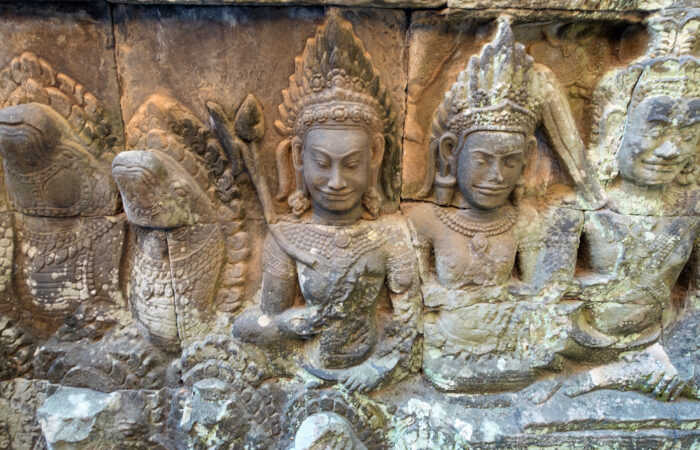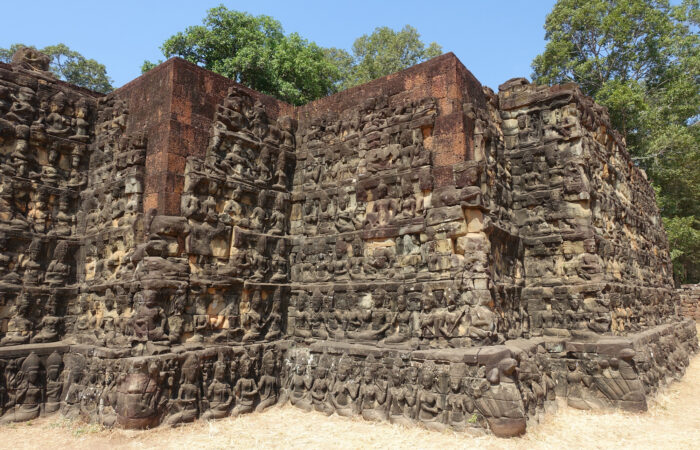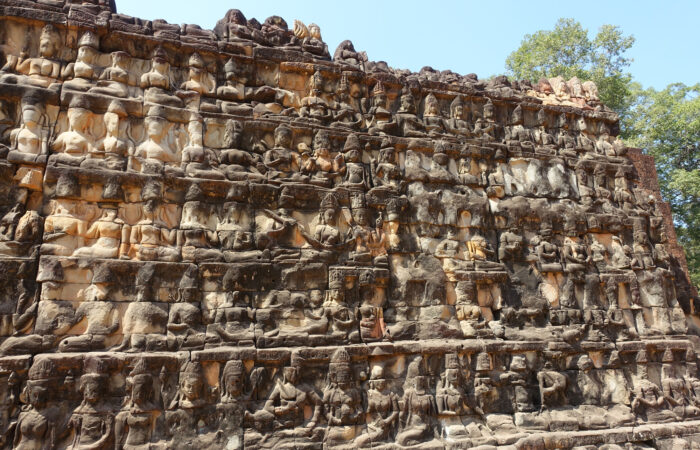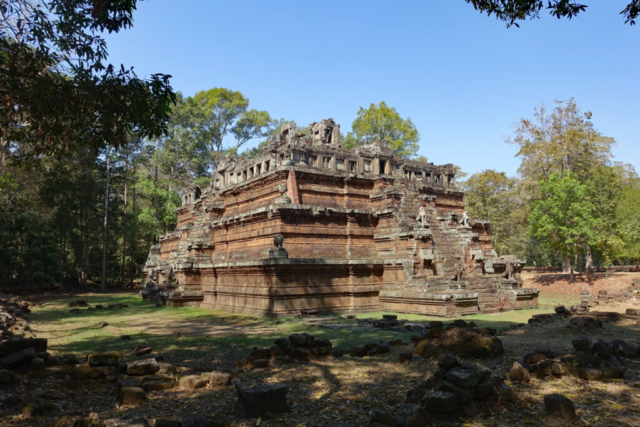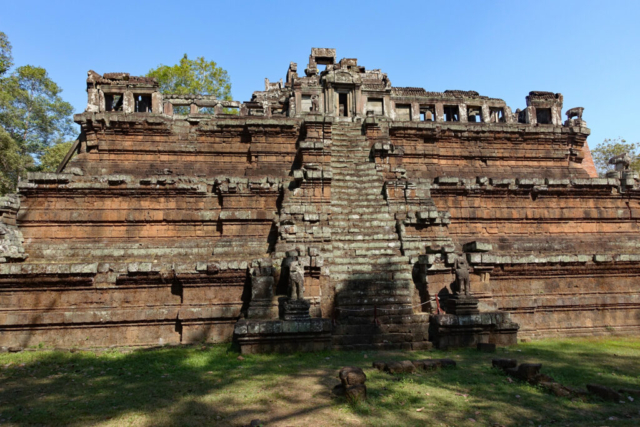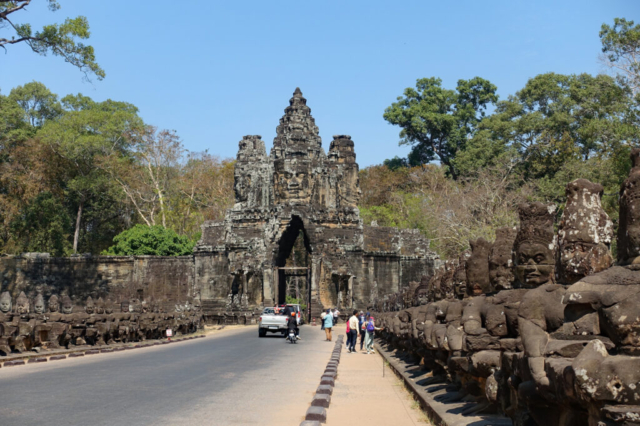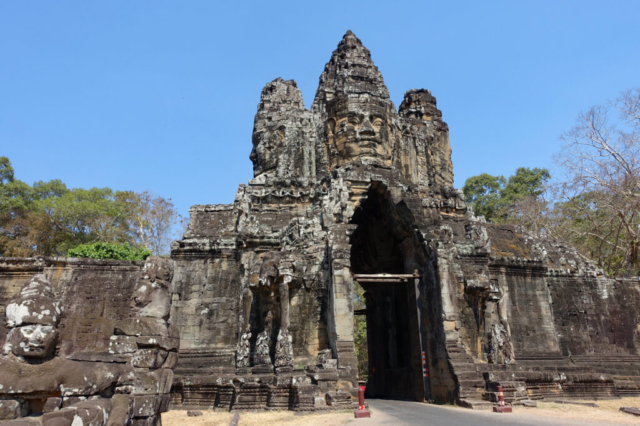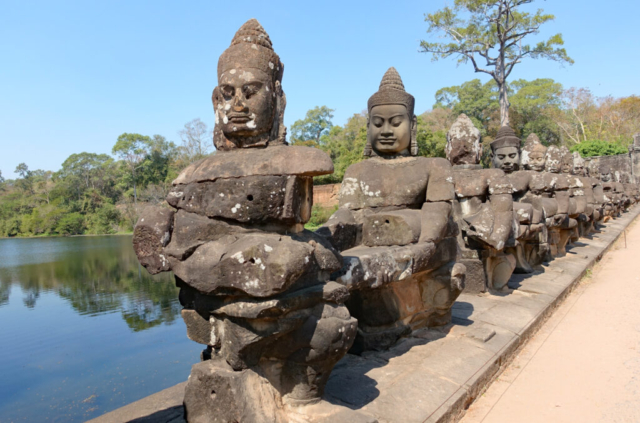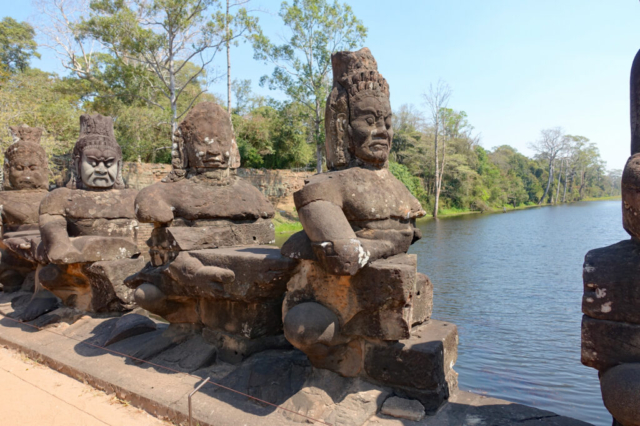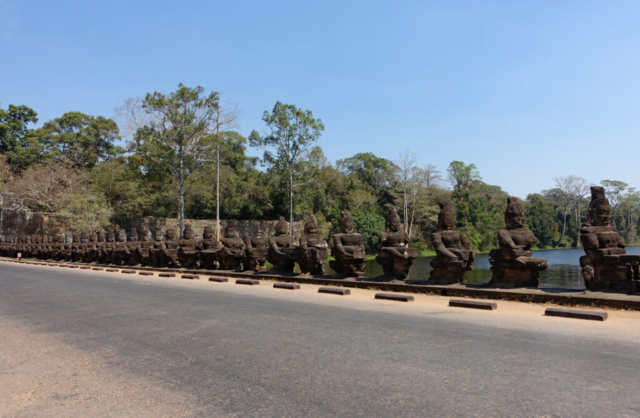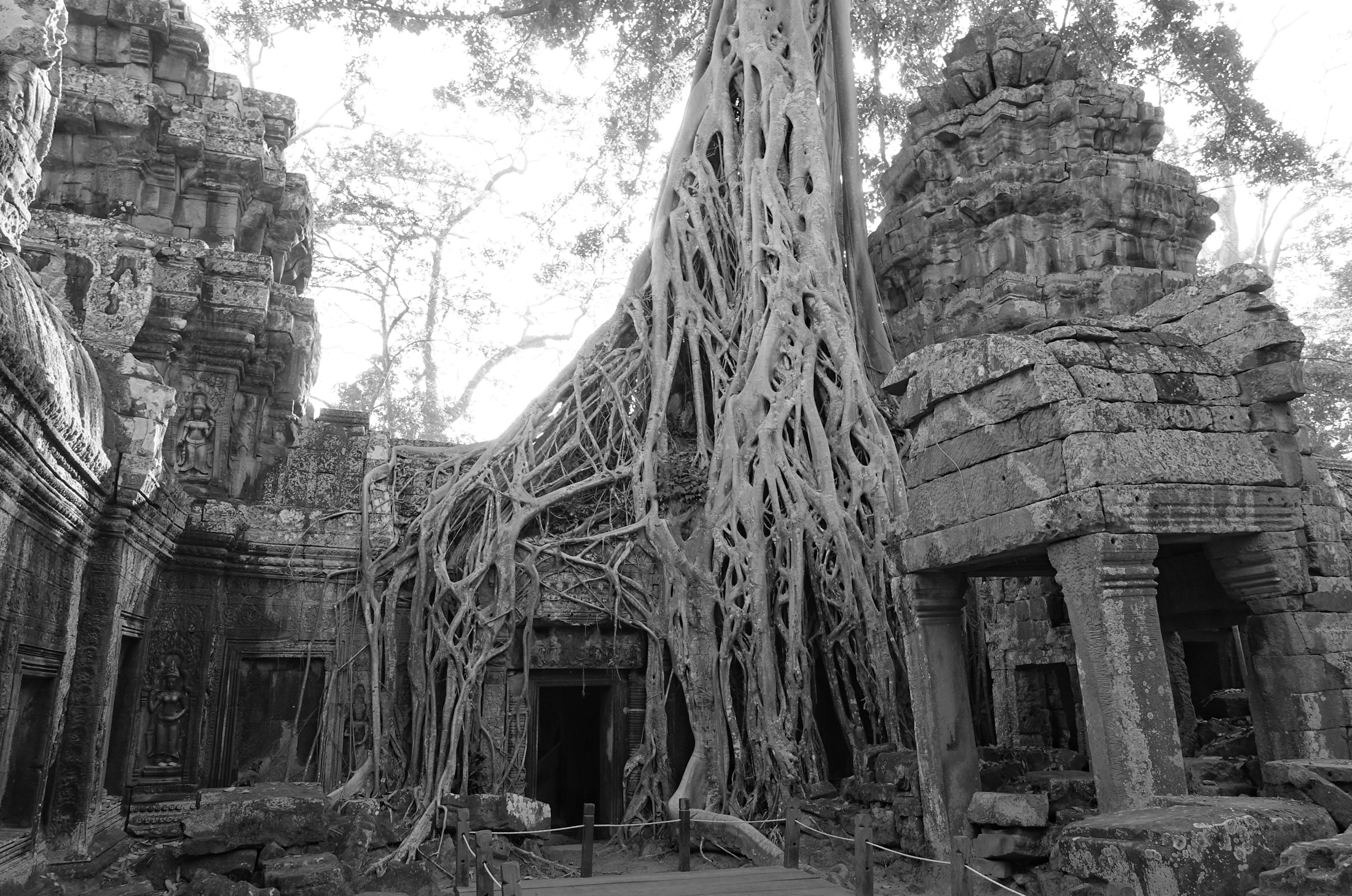
Today’s tour was via tuk tuk because the distances were not very far between the temples we chose to visit. On the advice of our driver, we were picked up at 7am to reach the very popular Ta Prohm temple at the 7:30am opening time. He suggested this would be the least busy part of the day, which was appealing to us.
Ta Prohm is almost as well known as Angkor Wat, becoming famous as the ‘Lara Croft temple’ from the Tomb Raider movie. Since that movie came out, tourists have flocked here to see the infamous trees that have overgrown parts of the temple. Located just 3km north of Angkor Wat, Ta Prohm is an ancient Buddhist monastic temple that was constructed in 1186 under the reign of Khmer King Jayavaraman VII. Like many temples, it’s a bit of a maze and we found ourselves wandering in circles but that’s part of the fun. To see the trees and their reptile-like roots overtaking the remains is spectacular, but there is so much more to this temple with stunning bas-reliefs, pediments and lintels. The western gate features the same monumental smiling faces found at Angkor Tom and the overgrown unrestored ruins of the temple are spectacular, adding to it’s mystique. One of the iconic photo spots (see above) is a great tree whose roots frame a doorway with a beautiful carved pediment. Another interesting feature at Ta Prohm is a motif that has become famous for resembling a Stegosaurus, so of course we had to search it out! After Banteay Srei, I think Ta Prohm is my second favorite temple in the Angkor Archeological Park. If you come here, take your time to enjoy the variety of beautiful carvings.
Bayon Temple is a richly decorated ancient Khmer temple in the middle of the walled city of Angkor Thom, famous for the serene and smiling faces on the towers within the temple. Bayon was built well after Angkor Wat during the 12th and 13th centuries under the reign of King Jayavaraman VII. While there were likely more towers originally, today there are 37 towers with 173 gigantic faces. Another highlight of Bayon is the stunning bas-reliefs along the inner and outer gallery telling a complex story of major events of the time as well as daily life. The reliefs of deva and deities around the temple are adorned with beautiful jewelry, and all are unique, wearing different head regalia. I found the Yogini, tantric dancers, decorating pillars to be quite fascinating with their hand gestures and jewelry. This temple can be confusing to navigate with it’s multi level labyrinth of passageways, so it’s easy to miss things. This is another temple that could be visited numerous times.
Walking north from the Bayon Temple, we made our way to the Terrace of the Elephants. The terrace is around 340m long fronting the Royal Palace, with the wall decorated in life-size carvings of elephants, alternated with a section of Garuda and lions. There are five staircases up to the terrace, all quite different and interesting. On the corners of the two lesser staircases are 3D like carvings of tri-headed mythical elephants pulling up lotus flowers in their trunks. Atop the northern grand staircase are the remains of a large carved screen flanked on either side by two tri-headed elephants.
Immediately north of the Terrace of the Elephants is the Terrace of the Leper King, a fascinating U-shaped double wall of deep intricate carvings. Both walls feature seven levels of divinities, royalty, dancers, aquatic creatures, animals and mythological figures, all unique in their design. We did not visit either of these terraces while here 10 years ago and it is definitely a highlight of our visit this time.
Tucked behind the two terraces is the Phimeanakas Temple, another pyramid style temple. It is a grand three-tiered temple whose corners are mounted with stone elephants and staircases flanked by lions. Access to the top is not permitted, the temple appears to be under reconstruction and the staircases are roped off. We are here in dry season so were able to walk closely around the base of the temple and marvel at the steepness of the stairs. (click on each photo to see a larger view)
The walls surrounding the massive Angkor Thom city have five very large and impressive gates. We briefly visited the Victory Gate and the South Gate. The Victory Gate is located on the east wall, and we were able to walk up the inside of the wall to get close to the massive smiling faces on top of the gate. Looking down we saw the causeway lined with a grand Naga railing being pulled by 54 stone giants, representing the tug of war between good and evil.
The Southern gate is the most famous and best restored causeway into Angkor Thom. The gates are dated from the 12th century and provide access through the 8m walls into the city. Standing on the causeway it’s easy to think back in time to wonder what it must have felt like approaching this spectacular walled city. The grand causeway preceding the gate passes over a 100m wide moat and is flanked by a Naga balustrade with 54 stone giants on either side pulling on the body of the Naga serpent. On one side the giants represent Devas with oval eyes and a casual smile, the giants on the other side represent Asuras with bulging eyes and grimacing faces.
The history and stories from all those centuries ago is so overwhelming that I can’t even begin to explain it here, so I have just scratched the surface with my short description of the places we visited. In a nutshell, you need to experience the splendor of this place for yourself!!!
The cost for our tuk tuk driver was USD $20 for approximately a 4 hour tour.
